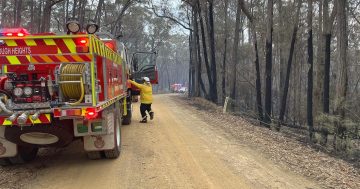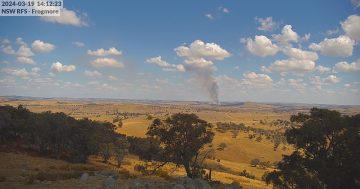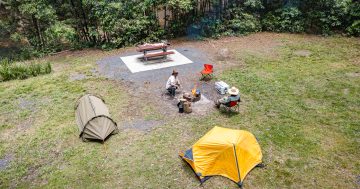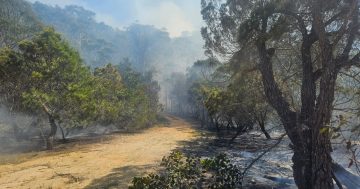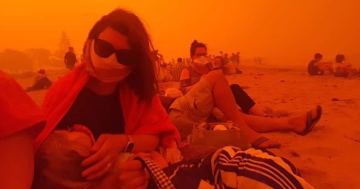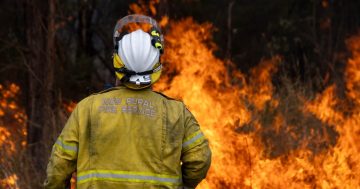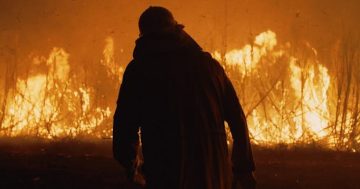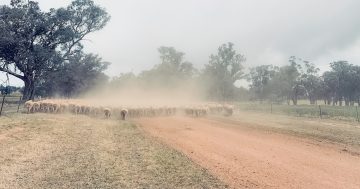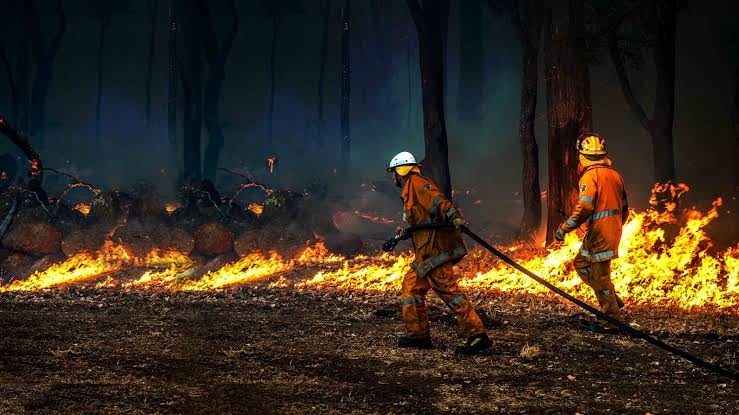
The Riverina Highlands RFS says residents across the drought-affected Snowy Valleys region must prepare for the coming fire danger period, which comes into effect on 1 November, as fast-moving fires on hot, windy days have the potential to be catastrophic. Photo: Riverina Highlands RFS/Facebook.
As temperatures rise across the southern Snowy Valleys — one of the state’s most drought-affected regions — concerns are growing that conditions are already showing worrying parallels to the 2019-2020 Black Summer bushfires.
Varying rainfall in 2025 has left parts of the district “as dry as a tinderbox”, according to farmers, even as eastern NSW saw above-average precipitation.
But in other areas, that rain has added fuel, while forests and bushland scorched during the Black Summer fires — which burned through 45 per cent of the LGA — have regenerated enough to support fast-moving, intense fires under elevated fire danger conditions.
With the RFS reporting a higher chance of warmer-than-normal conditions across southern NSW, the drought-impacted Upper Murray, within the Riverina Highlands RFS zone, has been identified as one of the state’s highest-risk regions.
Local brigades warn that even small fires could spread rapidly across the parched landscape if hot, windy days arrive before sufficient rain falls, making the next few weeks before the official fire danger period a crucial window for residents and firefighters to prepare.
The state’s statutory Bush Fire Danger Period runs from 1 October, 2025, to 31 March, 2026, but the Riverina Highlands kicks in from 1 November.
The 2025-26 NSW RFS Fire Season Outlook, delivered to the state’s Emergency Services Minister Jihad Dib last month, confirms the concerns already being raised by local farmers.
The report warns that, after a wet winter, the state can expect a late-onset bushfire season.
While recent rains have spurred above-normal grass growth, the outlook cautions that limited opportunities for hazard reduction, regenerating bushland and elevated fuel loads mean significant fire risks will persist as the season progresses.
Operational planning has been put in place to help ensure communities and firefighters are better protected.
The Australian and New Zealand Council for Fire and Emergency Services (AFAC) Spring 2025 Bushfire Seasonal Outlook has forecast a ”normal” bushfire risk for southern Australia, but warns against complacency.
South-eastern Australia and the northern and western parts of the state are set to experience above-average temperatures from September to November.
But AFAC warns a rainy spring may contribute to fire risks through fuel growth.
“While this [the rainfall] is expected to lower fire risk during spring, it may also encourage significant grass growth in central and western areas,” the report states.
“Fire agencies and land managers are closely monitoring conditions, as a shift to a more neutral outlook could increase the potential for problematic fires later in the season.”
Riverina Highlands RFS group captain James Crain said the current situation was concerning.
“Compared to most springs, we haven’t grown a lot of grass, but there’s still enough fuel there, and if it keeps not raining and dries off, it could become dangerous,” he said.
He added that paradoxically, sparse, dry fuel could make fires move faster.
“Fires spread quickly when there’s a lack of moisture,” Mr Crain warned. “Fine grass and shrubs ignite easily and carry flames rapidly — that’s when they start to run.”
In that part of the state, geography compounds the risk.
Mr Crain manages a farm near Tooma, south of Tumbarumba, which borders state forest and national parkland, creating a continuous fuel corridor where fires can move directly from private land into bushland.
He said that while NSW agencies, including Forestry Corporation and the National Parks and Wildlife Service (NPWS), carried out hazard-reduction burns, wet winter conditions this year had limited opportunities to complete key burns.
Bolstering firefighting capabilities, the NSW Government has deployed Australia’s largest AI-powered early fire detection camera network, covering more than 1.2 million hectares of state forest, including key sites near Tumut, Bombala and Bathurst.
Developed in partnership with Pano AI, the cameras scan the landscape for smoke in real time and alert crews within minutes.
Forestry Corporation said the system provided a “critical edge in the first 30 minutes after ignition”, particularly in high-risk regions such as the Riverina Highlands, and directly addressed recommendations from the NSW Independent Bushfire Inquiry following the 2019-20 Black Summer fires.
But Mr Crain said for local landowners, the coming weeks would be decisive.
“Given the lack of moisture, if we start getting 35-degree days with a north-westerly wind, it could be serious,” he said.
“It’s stayed cool and calm so far, but that could change quickly. Some years it looks horrendous, and then late rain comes and saves us. Hopefully, that’s the case again.”
Mr Crain said brigades remained focused on preparation, but warned volunteer numbers were limited.
“We’ve got the trucks and the gear — we just need more people to step up,” he said. “You can have aircraft and radios, but without boots on the ground, you can’t stop a fire.”
He has urged people wishing to sign up as volunteers with the Riverina Highlands RFS to phone (02) 6981 4222 or email: [email protected].
People living in the Snowy Valleys are also encouraged to follow the Riverina Highlands Facebook page for the latest weather and fire information.







